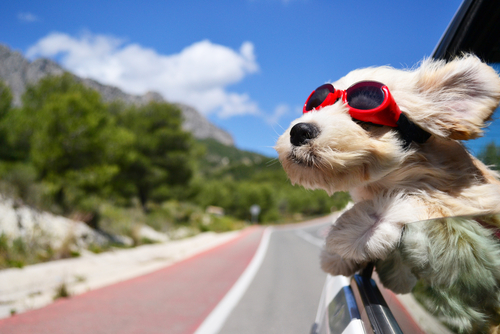
Moving to a new home can cause undo stress on all family members, including the four legged ones that have no idea what’s going on. Dogs are often territorial and may have a harder time transitioning into their new digs. Listed below are some tips to ease the move and make it a more positive experience.
Before the Move
If moving to a new city or state, check local ordinances to make sure vaccinations are up to date and registrations are in place. It also is a good idea to make sure there are no breed restrictions in the area whether it’s with the city, the county or the HOA. Ask the former veterinarian for all medical records as well as recommendations for a new veterinarian in the area.
During the Move
Most owners struggle with the question of where to put the dog during the move. There are people coming in and out of the house. Confusion about what goes where. Some owners find boarding their dog with a kennel or a family member the most ideal solution, but that isn’t always an option.
Emptying out a room ahead of time may suit some. In that empty room, put in favorite blankets, toys or treats. Place a pet gate across the doorway so the dog can still see out and the ensuing noise won’t cause any more stress. If the dog is having anxiety issues, a natural, mild sedative might be in order. Having family members sit in the room with the dog will ease some of the worry as well. There doesn’t need to be any interaction, family members rotating in and out should bring something along to quietly entertain themselves. If the dog is already in a nervous state, petting and talking to the dog may heighten the anxious feelings. A calm quiet presence, shows the dog there is nothing to be nervous about.
After the Move
Before going into the new house, leash up the dog and go for a short walk around the neighborhood. Let him scope out his new “territory” and become familiar with the scents of his surroundings.
Unpack the dog’s things as soon as possible; placing familiar items in the same rooms they were in the old house. If the dog’s crate was in the kitchen, keep it there to create some semblance of familiarity.
If the dog is microchipped or tattooed, be sure to update the change of address in the databank in the first couple of days. Nothing is more nerve wracking than hunting for a lost dog in a new area.
 Toledo, United States.
Toledo, United States.